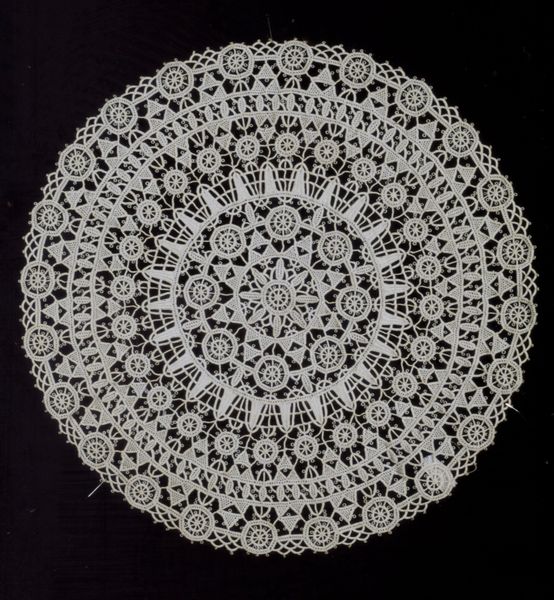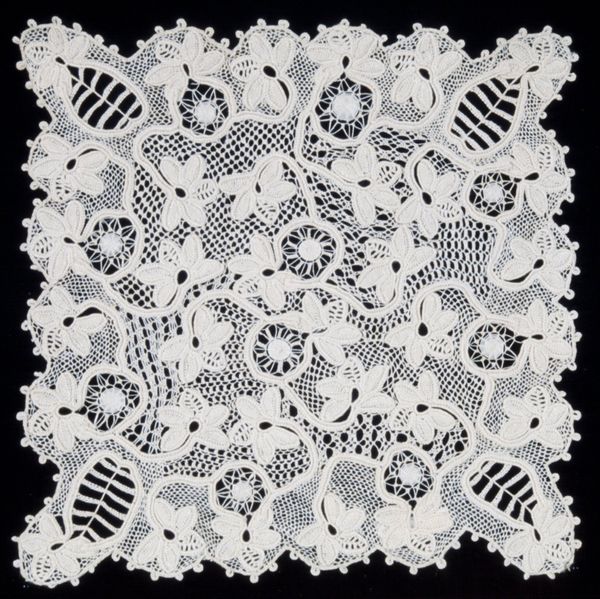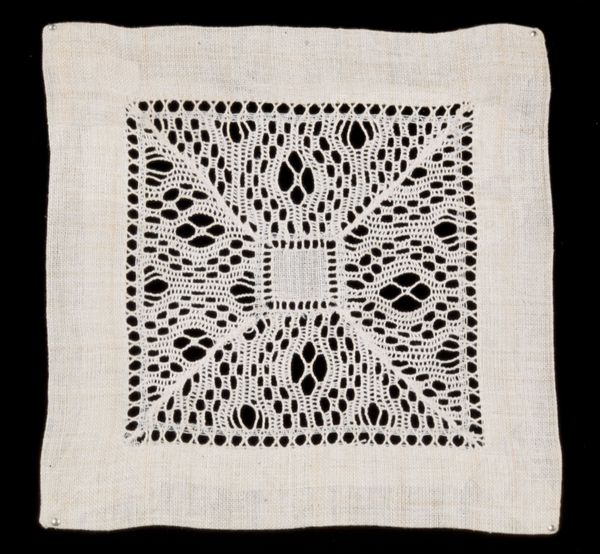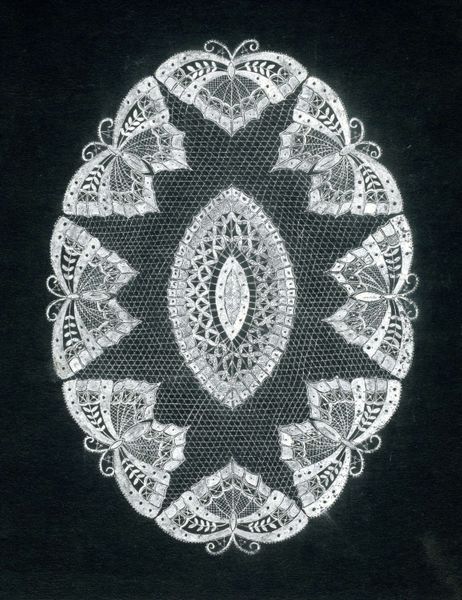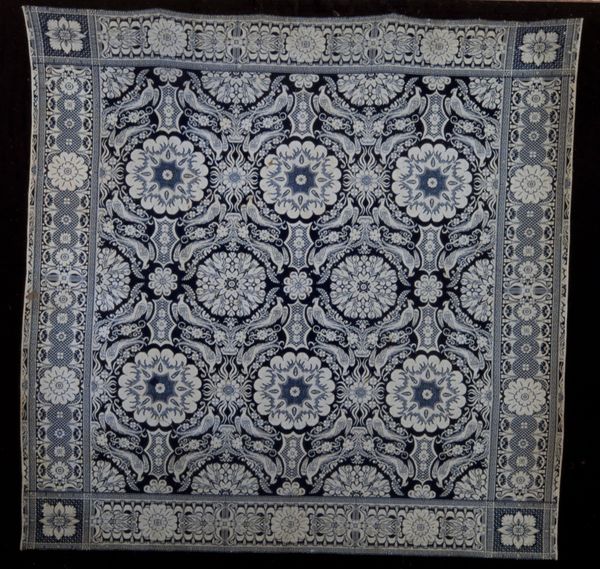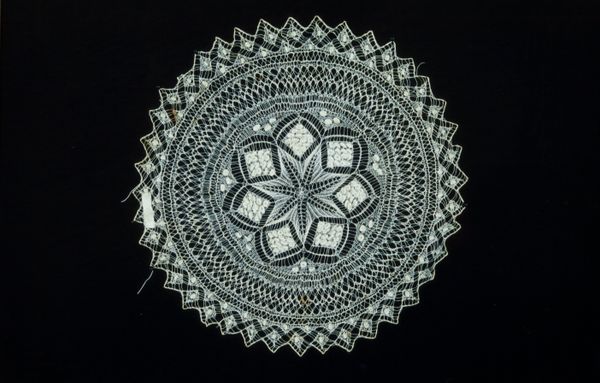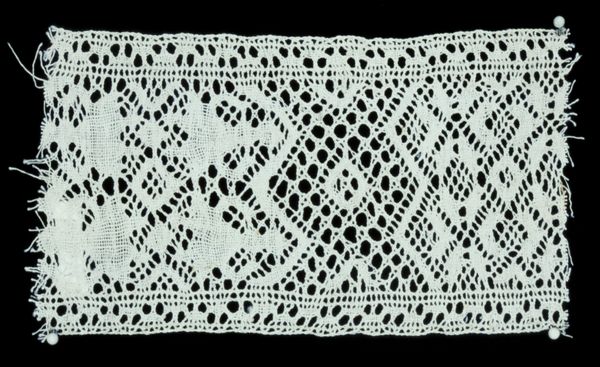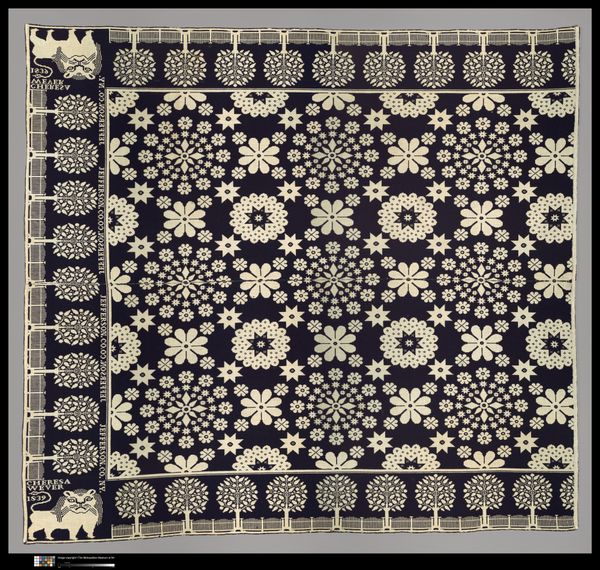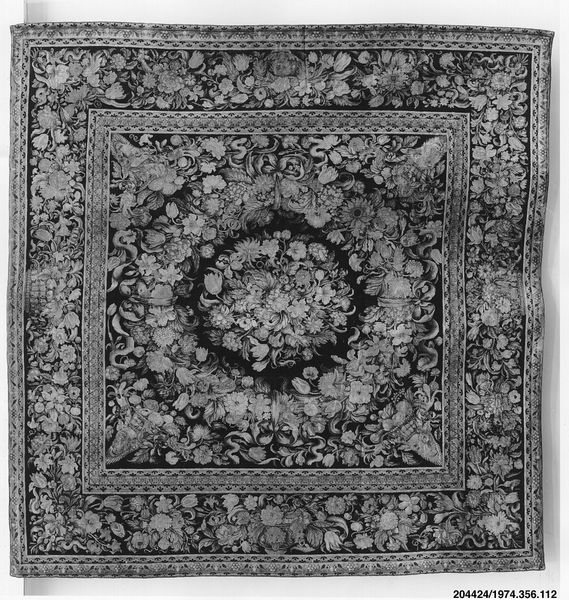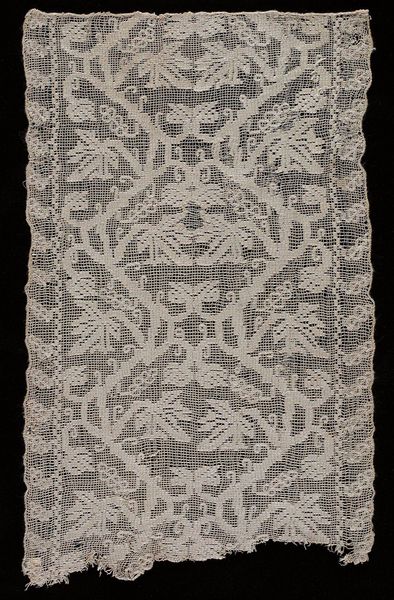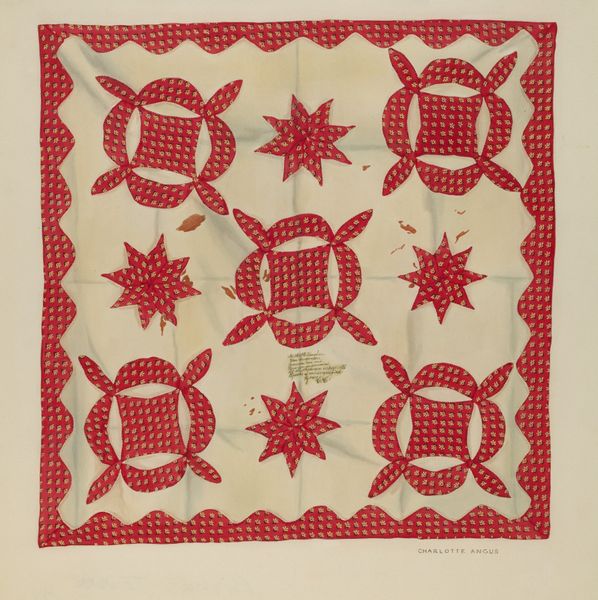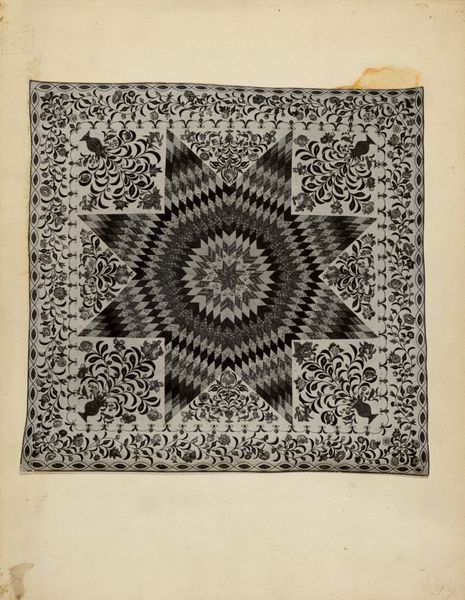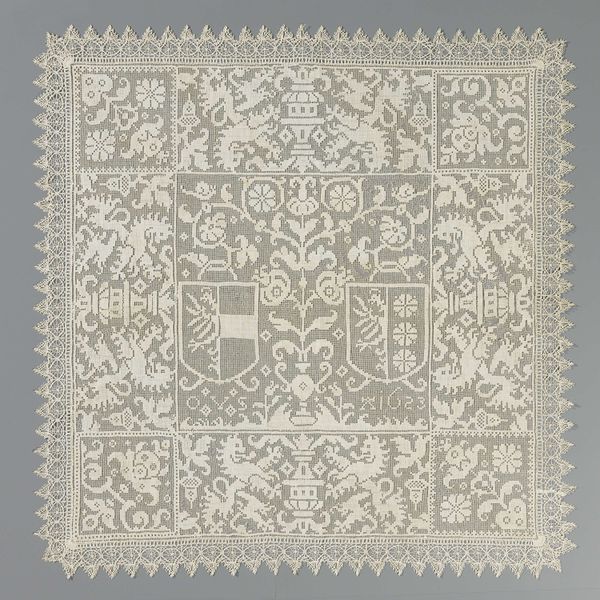
textile, cotton
#
textile
#
geometric pattern
#
geometric
#
cotton
#
decorative-art
Copyright: Public Domain
Curator: Here we have an intriguing, anonymously created "Doily," believed to be from the 20th century. Editor: It's intensely delicate! A maze of meticulously knotted threads. It makes you consider the labor that went into this geometric construction, almost entirely composed of these perfect small triangles. Curator: Absolutely. What’s striking is the context surrounding pieces like this. These doilies represent a fascinating tension between the domestic sphere and larger economic forces, often acting as indicators of leisure time and the ability to engage in non-essential crafts. Editor: You’re right, and the material itself plays a huge role. The very cotton thread, consider the historical reliance of textiles, from global trade networks to gendered labor within families... each loop suggests hands dedicated to creation but maybe simultaneously restricted by their roles. Curator: Exactly. And even in its abstract form, the "Doily" speaks to ideas within folk art of preserving traditions while showcasing the individual talent of the artist, influencing later movements like pattern and decoration. Editor: The geometry too can seem almost radical given it's set against the very practical function of protecting furniture, isn’t it? Each triangle is an act of repetition, meditation almost. But I see that relationship of high art and the every day as inherently political; what labor do we choose to celebrate, whose aesthetics have "value"? Curator: Right, it complicates our standard art hierarchies, highlighting how skills associated with craft can and do challenge elitist cultural values. Editor: Looking at "Doily", you are not just facing an innocent adornment; it’s really a piece that embodies production and consumption and how handmade production stands alongside mass manufacturing. Curator: Well said. The convergence of cultural expectations and pure aesthetic talent is powerfully illustrated. Editor: Yes. It causes me to pause and reflect, and maybe it should make all of us ask new questions of art objects from an often marginalized tradition.
Comments
No comments
Be the first to comment and join the conversation on the ultimate creative platform.
